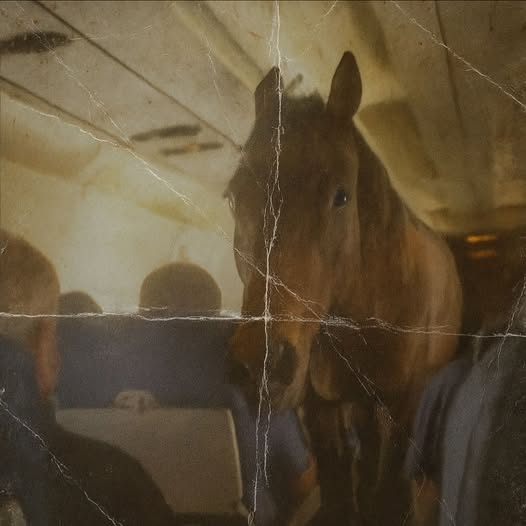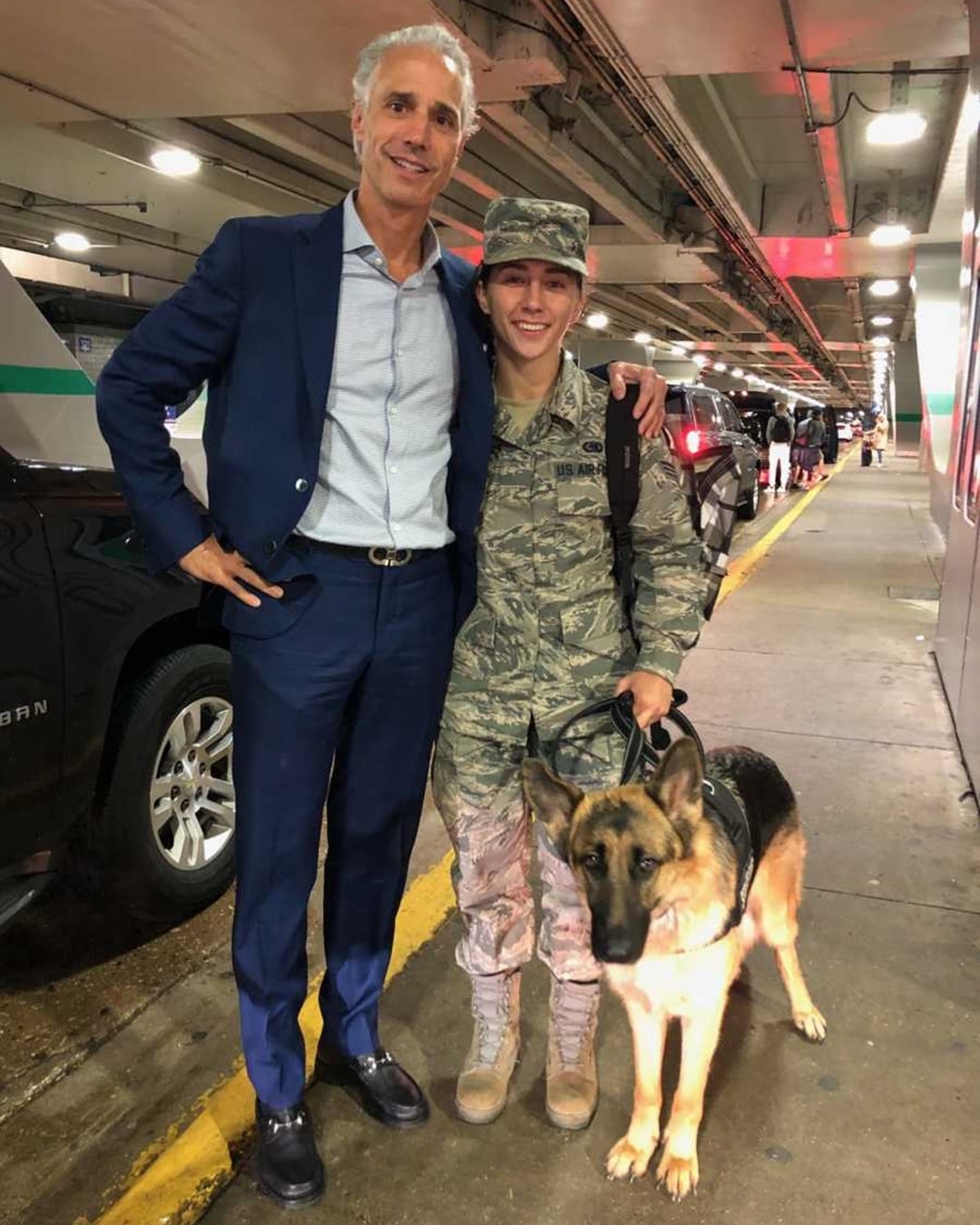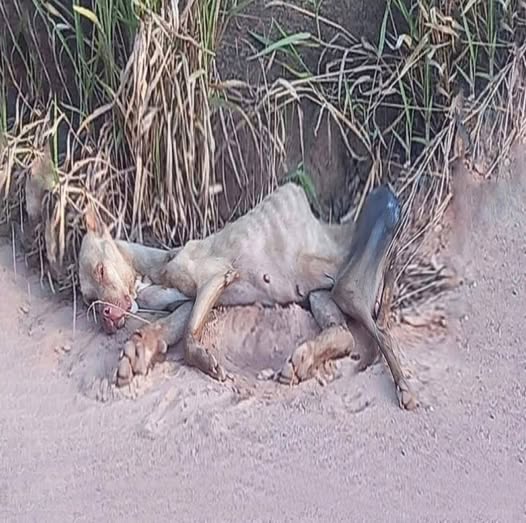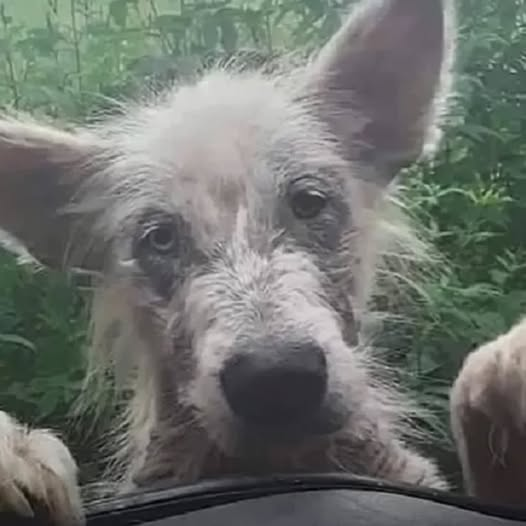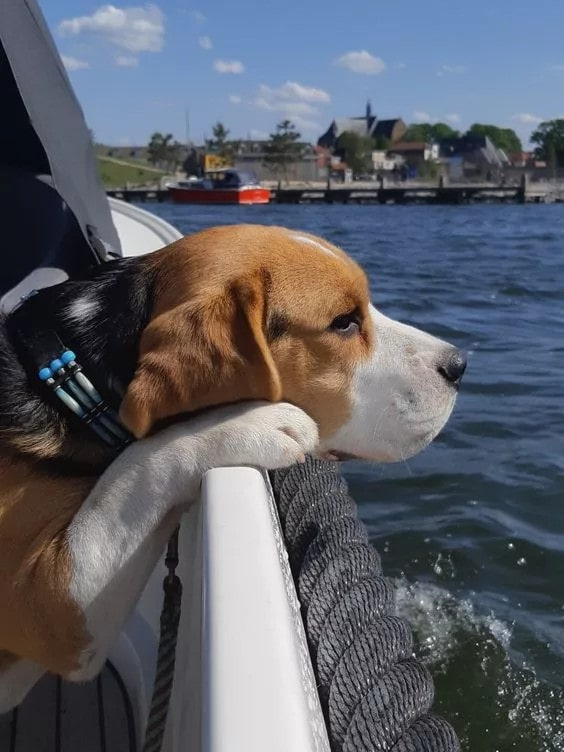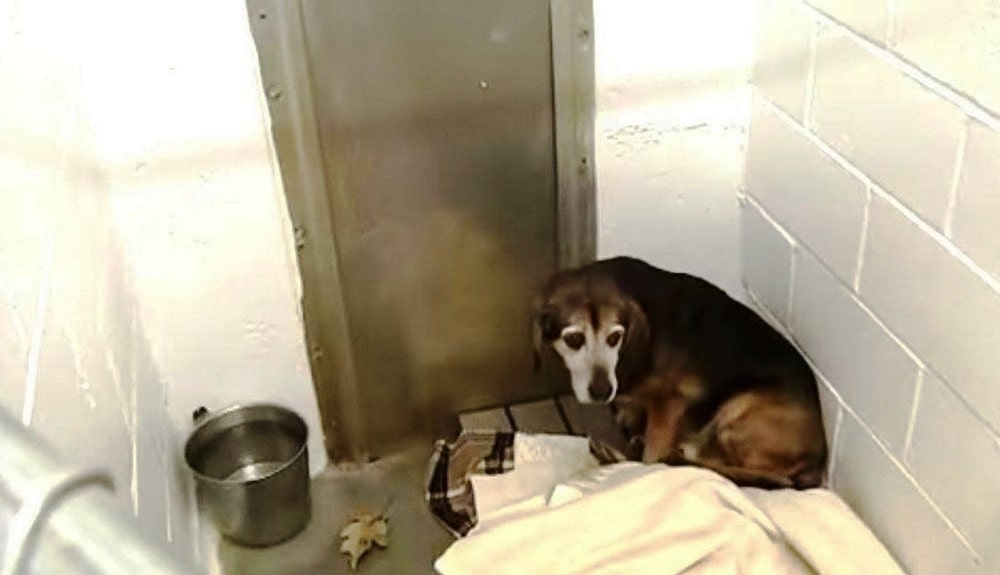The photograph was grainy, black and white, the edges curling like old parchment, but it captured something timeless. Mr. Hale, seated at the controls of his weathered plane, his hands steady even as the ashclouds churned behind him, and Esme, the brown mare with the kind eyes, standing calmly in the makeshift cabin, as if she had always belonged there. It became an image passed from hand to hand in the years that followed, a testament to courage, love, and devotion in the face of disaster.
No one on Isla Ternura would ever forget that summer. Before the eruption, life had been slow, almost dreamlike. Fishing boats bobbed gently in the bay, the small schoolhouse echoed with children’s laughter, and Hale’s presence, quiet and unobtrusive, had always been a comforting constant. But the ground had begun to shake subtly at first, faint tremors that most attributed to the restless nature of volcanoes. Hale, however, read the signs differently. The smoke rising from the mountain’s summit was thick, black, almost viscous, curling into shapes that seemed to writhe with intent. The birds had vanished, leaving the air heavy with silence. Hale knew that the island’s beauty, its serenity, could vanish overnight.
He worked tirelessly, waking before dawn to check the plane. Its engine had always been temperamental, but Hale coaxed it into readiness with patience and care. Every spare part was cataloged, every tool laid out with precision. He cleared the dirt airstrip of debris, sharpened the axes, and reinforced the wooden boats, just in case the flights became impossible. Villagers watched him, some with skepticism, some with a rising sense of awe, as he moved with purpose that only years of solitary living could have honed.
On the second day, as the sky darkened unnaturally, Hale went from home to home, knocking on doors, speaking softly but with unmistakable urgency. “You must leave. Now,” he said. Some laughed nervously, others hesitated, weighing years of attachments against fear of the unknown. But Hale’s eyes, steady and unwavering, left no room for argument. By sunset, the majority of the villagers had packed what little they could carry, and Hale’s plane stood ready, wings gleaming faintly under the muted sun, a lifeline amidst looming devastation.
When the volcano erupted, the island trembled as though the earth itself was screaming. Lava tore through the slopes, leaving a path of destruction that devoured everything in its path. Smoke and ash blanketed the sky, turning day into night. And yet, Hale flew. Flight after flight, he braved the churning wind, the falling cinders, the roar of molten rock below. Families clutched each other, children cried, and the elderly whispered prayers, but Hale never faltered. With every takeoff, he seemed to carry not just passengers but the very soul of Isla Ternura.
The final flight was different. Hale had refused to leave without Esme, the mare he had raised from a foal, the creature who had been his companion for over two decades. The villagers had tried to protest, citing the dangers, the impossibility, the weight of the plane with a horse aboard. Hale shook his head gently. “She belongs with me,” he said. And so, the seats were stripped, canvas slung across the cabin to secure Esme’s footing. She walked in quietly, calm and obedient, as though sensing the gravity of the moment. No one else had seen her behave like this before; she seemed almost to understand the urgency, the stakes, the trust between them.
The flight was harrowing. Ash stung their eyes, the engine groaned under the added strain, and turbulence threatened to toss them into the churning black sky. But Hale’s hands, strong and sure, guided them through the inferno. Behind them, Isla Ternura was disappearing, shrouded in smoke and fire. The last thing Hale saw before leveling the plane above the clouds was the village, small and fragile, bathed in the eerie glow of molten rock, and he felt a pang of sorrow for all that might be lost.
When they landed on the mainland, the villagers spilled out, gasping for air, their relief palpable. Children clung to parents, families hugged as though the world had ended and begun again all at once. Hale helped Esme out of the cabin, the mare nuzzling his shoulder in quiet acknowledgment. For a moment, time seemed to pause, the chaos of nature and the frantic escape dissolving into a shared, silent reverence.
News of Hale’s bravery spread quickly. Journalists arrived, cameras flashing, scribes taking notes, but Hale said little. His concern was not for recognition; it was for the lives he had saved and for the safety of the one companion who had never left his side. Esme, meanwhile, became something of a legend herself. People marveled at the mare who had flown in a plane, whose calm demeanor had mirrored Hale’s own unwavering courage. Children pressed their faces to the fences where she stood, and elders whispered stories of the man and his horse who had defied disaster.
In the weeks that followed, the island remained uninhabitable. Lava had claimed homes, farmland, and memories alike. But Hale did not waver. He worked with engineers, geologists, and aid workers, guiding them to salvage what they could, mapping safe paths through the treacherous terrain, and ensuring that every last inhabitant had been accounted for. Every night, he returned to Esme, stroking her mane, whispering to her as he once had, sharing in the quiet triumph that had only the two of them as witnesses.
The photograph taken by one of the passengers became iconic. Newspapers across the globe printed it, and it came to symbolize resilience, love, and the quiet heroism that does not seek applause. Yet, Hale remained humble, often retreating into his solitude with Esme, speaking little of what had transpired. “The island needed saving,” he would say simply. “We all did what we could.” And in truth, he spoke of more than the volcano; he spoke of the trust between human and animal, of the silent partnerships that carry us through life’s most perilous moments.
Years later, when the island had begun to heal, Hale returned briefly. The scars of lava were still visible, blackened earth interspersed with tender shoots of green. Villagers who had survived had rebuilt where they could, creating a fragile semblance of the community that had once thrived. Hale walked slowly among them, Esme at his side, and there were tears in more than a few eyes. For some, he was a savior; for others, a living legend. And for all, he was a reminder of what courage, loyalty, and quiet determination could accomplish when faced with overwhelming odds.
Hale never stayed long on the mainland. He could not. Isla Ternura, scarred yet still beautiful, called to him. He leased a small cottage near the coast, and every day he would take the boat out, surveying the remnants of the village, the slopes of the volcano, and the gentle rise and fall of the waves. Esme, older now, would nuzzle his hand as they watched the sun dip into the horizon, both aware of the impermanence of life and the enduring strength of the bonds they shared.
In time, others would tell tales of Mr. Hale and Esme, stories passed from generation to generation, often accompanied by that famous photograph. Tourists and researchers would visit the island, drawn by curiosity and the whispered legend of a man who had refused to leave without his horse. Yet, those who knew Hale understood that the story was far deeper than heroism or spectacle. It was about responsibility, about protecting what you love, and about finding courage when the world seems intent on destruction.
Even in his later years, Hale continued to fly, always cautious, always prepared, never seeking fame. Esme, though older and slower, remained by his side, a steadfast companion who had shared in the most dangerous flights of his life. And in the quiet evenings, when the wind carried the faint scent of ash and salt, Hale would sit by the shoreline, Esme’s head resting gently against his knee, and remember that summer of ’74—the smoke, the fire, the fear, and the remarkable calm of a horse who had trusted him completely.
That photograph, grainy and blackened with age, still hangs in a small museum on the mainland, a symbol not just of survival, but of devotion. Visitors often linger before it, sensing something unspoken in the gaze of the man and his horse, something that transcends words or explanation. They leave with a quiet awe, a renewed faith in the capacity of humans and animals alike to rise above danger, to protect what is precious, and to act with courage when the moment demands it.
Mr. Hale, the man who lived for decades on a quiet island, had left an indelible mark on the world—not through wealth, power, or renown, but through quiet acts of bravery, a steadfast heart, and a bond with a horse named Esme that reminded everyone who heard the story that sometimes, love and loyalty are the most powerful forces of all.
